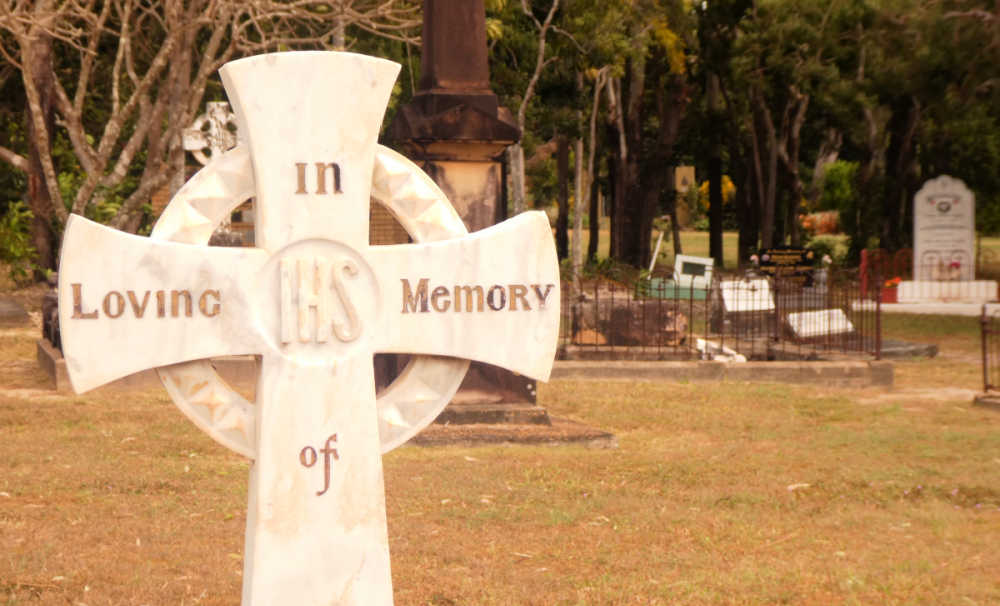How to Write a Eulogy
Are you trying to figure out how to write a eulogy but don’t quite know where to begin or what to include? We’re here to help.

Although writing a eulogy can be difficult, it’s also an honor. This is your chance to pay tribute to a loved one in a way that reflects who they were, what they taught you, and how you think they’d want to be remembered. Putting all of this into words can feel daunting, especially if you don’t typically write or speak publicly. Below, you’ll find tips to help you write a eulogy that best celebrates your loved one.
How Long Should a Eulogy Be?
The eulogy you write should be deeply personalized to honor your loved one. This means the length of it will vary depending on the relationship between the deceased and the writer. At a funeral, memorial service, wake, or wherever else you may be delivering the eulogy, the guests will understand how difficult the task of giving a eulogy is, and they will support you taking your time.
Don’t feel pressure to rush or make it shorter than you want. Go with your gut and follow your heart. You should use this time to remember your loved one in as much detail as you feel is right. It doesn’t hurt to consult the pastor or celebrant for advice about the length of the eulogy, but don’t let yourself get bogged down by feeling like you can’t fit what you want into the time constraints.
The appropriate length of a eulogy is however long it will take you to express what’s in your heart.
What’s Included in a Eulogy?
A eulogy, like any other speech, typically includes an introduction, the body paragraphs, and a conclusion.
The body is where you can pour your heart and soul onto the page. You can dive into the impact this person had on you and on his or her community. The body of the eulogy is where you’ll include most of the details and stories about your loved one.
- To write a meaningful eulogy, you can think about how your loved one would want to be remembered (such as friends and family celebrating their life rather than grieving their loss), and what they would want to be remembered for.
- Include memories. These can be touching stories, funny anecdotes, or anything you feel illustrates who this person was. It’s also a good idea to ask friends and family if they have any personal memories of your loved one which would be helpful to use in your speech.
- Include a brief story of their life. Maybe you’d like to speak about noteworthy parts of their upbringing, or major milestones throughout their life.
- Tell stories about their personal hobbies or passions.
- Discuss their achievements. You can discuss their career path, awards, education, or any other remarkable experiences.
- If they had a motto or philosophy they lived by, you can use this as well.
Telling stories throughout a eulogy is the best way to help everyone recall what their loved one was like in life and appreciate their time together. Using real examples of who this person was will make your speech effective at connecting the audience with their loved one again.
You can get lots of ideas from our examples of real eulogies here.
How to Start a Eulogy: The Introduction
The beginning of the eulogy doesn’t have to be very long. This is where you’ll set the tone of the speech and identify who the person was to you. You can begin by stating your relationship to the deceased. Some also think it’s fitting to read a poem, religious verse, or a quote which encapsulates the personality or legacy of your loved one.
How to End a Eulogy: The Conclusion
The conclusion is where you’ll summarize the key points you’d like the audience to remember about your loved one. You can do this by citing a meaningful sentiment you learned from him or her about life, love, family, etc. which you’d already shown examples of through the stories you told.
You could also mention what you hope your audience remembers this person for, such as their empathy, sense of humor, or kindness. Get specific. If your loved one was proud of their cooking skills, mention the lasagna he or she always made and how much you’ll miss it, for example.
You can end your eulogy by thanking everyone for coming together to honor their friend or family member, and encouraging them to remember the goodness he or she left behind.
How to Organize Your Thoughts into a Eulogy
Summarizing the life, achievements, and best qualities of one person into a eulogy may seem like a massive undertaking. If you find yourself feeling this way, we understand. However, don’t put too much pressure on yourself. Remember that the purpose of the eulogy is to shine a light on what a special personal your loved one was. It doesn’t have to be perfect, it just needs to come from the heart.
In order to figure out which stories you should use to best memorialize your loved one, you can start by making a list. Jot down anything you can remember about this person that shows their funny quirks, lessons they taught you, and experiences you had together. You can also include the stories and memories you’ve gathered from friends and family about them as well.
Once you’ve dumped all of your thoughts onto paper, your mind will feel much more clear. It will be easier to process which details to include and in what order to include them. You can begin to circle or highlight the pieces you want to use, and group them into sections such as:
- funny stories
- ways they helped the community
- their career achievements
- their personal accomplishments
- their devotion to family
- stories that show their philosophies
- what they taught you
- their unique traits (maybe their patience, wit, creativity, etc.)
Once you’ve done this, you can craft these sections into the body of the eulogy, write the introduction and conclusion, and edit from there.
How to Edit a Eulogy
We highly recommend that after you write a eulogy, you edit it for grammar, clarity, and tone. While delivering the eulogy, there is a chance you’ll be struck by nerves or emotion. If this happens, the last thing you need is typing errors or awkward wording to throw you off.
After you’ve initially written the first draft, you just need to fine tune it to make sure it’s ready. Read through it several times for mistakes, and also let a friend read it over for you if you’re comfortable with that. A fresh pair of eyes will be able to pick up on anything you may have missed, as well as confirm that what you’ve written is clear. You can also practice reading your speech aloud to ensure it sounds smooth and natural.
How to Practice a Eulogy
It’s a great idea to practice reading the eulogy several times in order to hear it spoken out loud and make sure it flows well. This will also help you become more confident when the time comes to actually deliver the eulogy.
You can practice it by simply reading it out loud to yourself, and listening for grammatical errors or run on sentences. You can also record yourself reading. This will help you pick up on areas where you might want to slow down or rearrange elements of the speech. Lastly, consider asking friends or family to act as a small audience for you to get used to public speaking.
See also our article on 'How to Give a Eulogy'
A Meaningful Way to Remember Your Loved One
After the loss of a loved one, you are bound to experience the complex array of feelings that come with grief. Writing a eulogy for this person in the midst of the emotional turmoil is difficult and can feel intimidating.
As you write, let the love and gratitude for your loved one guide you. Include the memories and messages you know the deceased would have wanted to be celebrated for.
If it becomes too overwhelming, take breaks. Clear your head. Ask friends or family for guidance. Give it a day and come back to writing it. Just know that your loved one would be proud of you for handling this task and remembering his or her life and legacy.
Related Pages:
Step by Step Guide to Planning a Funeral
Our Huge Collection of Funeral Poems
- Grief and Sympathy Home
- Funeral Speeches and Eulogies
- How to Write a Eulogy
For Remembrance:
Sales from our pages result in a small commission to us which helps us to continue our work supporting the grieving.
Memorial Jewelry to Honour a Loved One
Check out our lovely range of memorial jewelry for any lost loved one. Pendants, necklaces, rings or bracelets, we have them all in all kinds of styles. Choose for yourself or buy as a sympathy gift.
Create an Online Memorial Website
Honour your loved one with their own memorial website. Share photos, videos, memories and more with your family and friends in a permanent online website. Free for basic plan with no ads.







